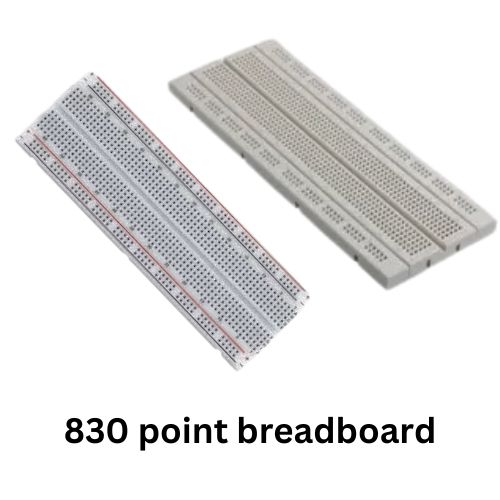An 830-point breadboard is a commonly used solderless prototyping board designed for building and testing electronic circuits without permanently attaching components. It features a total of 830 tie points (connection holes), which are organized into two main sections:
Structure:
-
Terminal Strips (630 Points):
-
Located in the center.
-
Consist of two sections of 5-hole rows labeled A–E and F–J.
-
Each row is internally connected horizontally, allowing component leads to be inserted and connected easily.
-
-
Power Rails (200 Points):
-
Two columns on each side, usually marked with red (+) and blue (–) lines.
-
Each column has 50 connected tie points.
-
Used to distribute power (Vcc and GND) throughout the breadboard.
-
Key Features:
-
Solderless: Ideal for temporary setups and experimentation.
-
Reusable: Components can be inserted and removed multiple times.
-
Standard spacing: 0.1 inch (2.54 mm) hole spacing, compatible with DIP ICs and standard components.
-
Adhesive backing: Often includes a peel-off adhesive and screw mounting holes for securing to a surface.
Applications:
-
Widely used in electronics prototyping, circuit testing, and educational projects.
-
Perfect for Arduino, Raspberry Pi, and other microcontroller-based experiments.


Reviews
Clear filtersThere are no reviews yet.